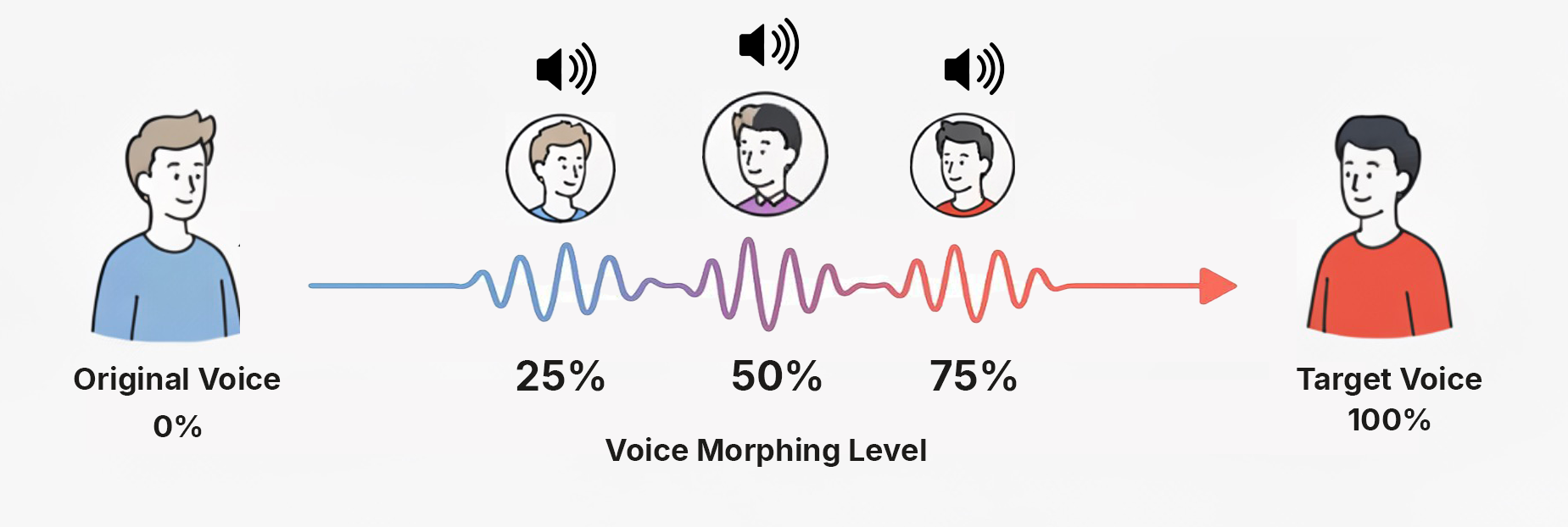VoiceMorph: How AI Voice Morphing Reveals the Boundaries of Auditory Self-Recognition
Kye Shimizu, Minghan Gao, Ananya Ganesh, Pattie Maes. 2025. VoiceMorph: How AI Voice Morphing Reveals the Boundaries of Auditory Self-Recognition. Submitted to CHI’26 (under review). https://doi.org/10.48550/arXiv.2510.16192
This study investigated auditory self-recognition boundaries using AI voice morphing technology, examining when individuals cease recognizing their own voice. Through controlled morphing between participants’ voices and demographically matched targets at 1% increments using a mixed-methods design, we measured self-identification ratings and response times among 21 participants aged 18-64.
Results revealed a critical recognition threshold at 35.2% morphing (95% CI [31.4, 38.1]). Older participants tolerated significantly higher morphing levels before losing self-recognition (𝛽 = 0.617, p = 0.048), suggesting age-related vulnerabilities. Greater acoustic embedding distances predicted slower decision-making (r 0.5-0.53, p < 0.05), with the longest response times for cloned versions of participants’ own voices.
Qualitative analysis revealed prosodic-based recognition strategies, universal voice manipulation discomfort, and awareness of applications spanning assistive technology to security risks. These findings establish foundational evidence for individual differences in voice morphing detection, with implications for AI ethics and vulnerable population protection as voice synthesis becomes accessible.
Additional Key Words and Phrases: Voice morphing, Voice cloning, Speech perception, Self-recognition, Identity
